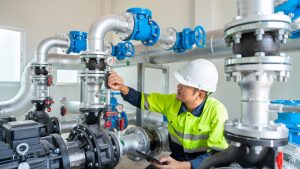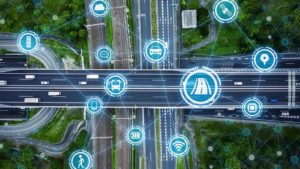Do you think you are prepared for the future of industrial maintenance management? With technology evolving at an unprecedented pace, staying ahead of the curve has become a top priority for asset managers. The way maintenance operations are conducted today is drastically different from just a few years ago, and tomorrow promises even more transformative changes. The advancements happening today are not just trends but essential shifts in how maintenance will be managed moving forward.
Let’s dive into the top trends that will reshape the landscape of industrial maintenance management today and in the future.
Let’s dive into the top trends that will reshape the landscape of industrial maintenance management today and in the future.
We will uncover
- Autonomous Maintenance Robots
- AI-Driven Maintenance Decision Support Systems
- Blockchain for Maintenance Data Security
- AI-Powered Predictive Maintenance
- Wearable Technology for Worker Safety
- Sustainability and Eco-Friendly Maintenance
3. Making Way for Smooth Industrial Maintenance Management via New-Age Tools
What is Industrial Maintenance Management?
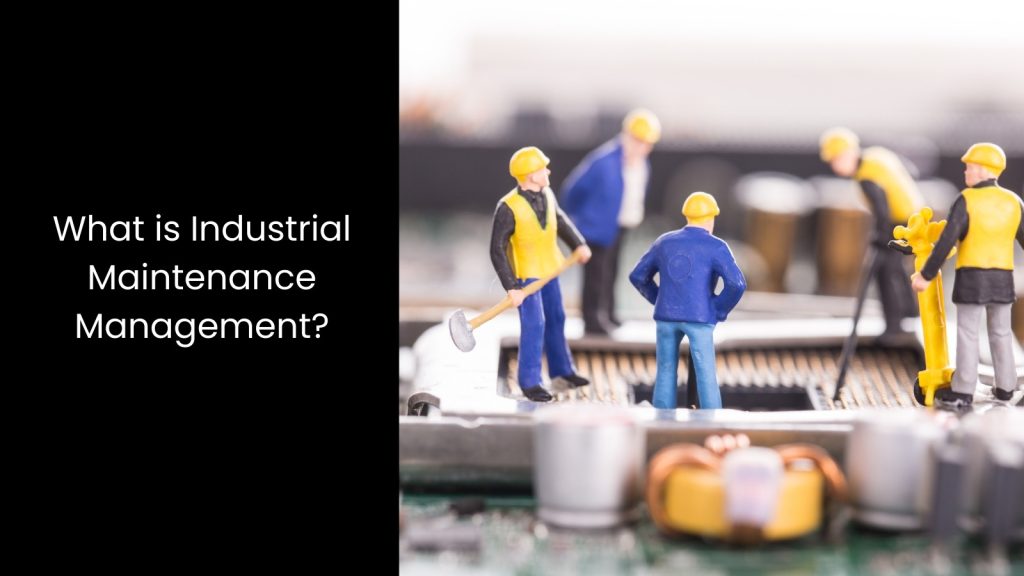
- Industrial Maintenance Management means a systematic approach to ensuring that machinery, equipment, and facilities in industrial settings operate efficiently and without interruption.
- It mainly focuses on planning, scheduling, and monitoring the maintenance activities needed to keep operations running smoothly. This includes preventive maintenance, where equipment is regularly serviced to avoid breakdowns, and corrective maintenance, which deals with repairing equipment after a failure.
- Industrial maintenance managers use various strategies, such as predictive maintenance, which involves analysing data to predict when maintenance should occur, and condition-based monitoring, which tracks equipment conditions in real-time. In the sense of effective maintenance management it emphasises safety, cost control, and improving equipment lifespan.
- As industries evolve, managers tend to rely on technologies like the Internet of Things (IoT), artificial intelligence (AI), data analytics and similar technologies to enhance decision-making, improve efficiency, and reduce downtime.
Top Trends in Industrial Maintenance Management
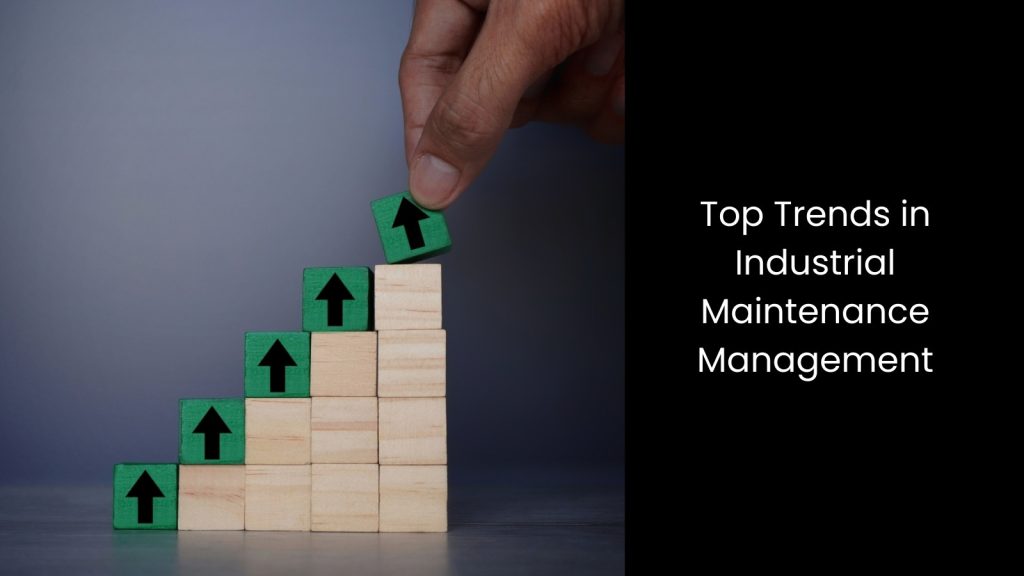
Autonomous Maintenance Robots
This technological trend will play a key role in the future of industrial maintenance management by performing dangerous, repetitive, or physically demanding tasks, reducing the need for human intervention. These robots will be designed for inspection, repair, and preventive maintenance tasks, which are crucial to keeping industrial equipment running smoothly.
Instead of workers performing manual checks or repairs, robots equipped with advanced sensors and AI will monitor machines, detect potential issues, and carry out repairs automatically. This will improve safety by keeping humans away from hazardous environments, such as areas with high temperatures, toxic substances, or heavy machinery.
Autonomous robots will also enhance efficiency by working 24/7 without fatigue, helping to prevent downtime and increase productivity. As these robots use real-time data and predictive maintenance techniques, they will provide more accurate assessments and interventions, reducing the risk of equipment failure and costly repairs. Additionally, robots will help manage repetitive tasks like cleaning or lubricating machinery, allowing human workers to focus on more complex tasks.
Instead of workers performing manual checks or repairs, robots equipped with advanced sensors and AI will monitor machines, detect potential issues, and carry out repairs automatically. This will improve safety by keeping humans away from hazardous environments, such as areas with high temperatures, toxic substances, or heavy machinery.
Autonomous robots will also enhance efficiency by working 24/7 without fatigue, helping to prevent downtime and increase productivity. As these robots use real-time data and predictive maintenance techniques, they will provide more accurate assessments and interventions, reducing the risk of equipment failure and costly repairs. Additionally, robots will help manage repetitive tasks like cleaning or lubricating machinery, allowing human workers to focus on more complex tasks.
AI-Driven Maintenance Decision Support Systems
This trend will significantly improve industrial maintenance management as it provides maintenance teams with advanced tools to make smarter decisions.
AI and machine learning will continue to evolve, allowing systems to analyse vast amounts of historical and real-time data from equipment, sensors, and previous maintenance activities. These systems will identify patterns and trends that human workers might miss, helping to predict when equipment will need repairs or maintenance before problems arise.
Maintenance teams will receive tailored recommendations for the best actions to take, such as when to perform preventive maintenance or when to schedule repairs. This will lead to fewer unplanned downtime, costly repairs, and longer equipment lifespans.
AI-driven systems will also optimise maintenance schedules, ensuring that teams perform tasks at the right time, which saves resources and reduces unnecessary work. With AI-supporting decisions, industrial maintenance management will become more efficient, cost-effective, and proactive, ultimately enhancing overall production and safety.
AI and machine learning will continue to evolve, allowing systems to analyse vast amounts of historical and real-time data from equipment, sensors, and previous maintenance activities. These systems will identify patterns and trends that human workers might miss, helping to predict when equipment will need repairs or maintenance before problems arise.
Maintenance teams will receive tailored recommendations for the best actions to take, such as when to perform preventive maintenance or when to schedule repairs. This will lead to fewer unplanned downtime, costly repairs, and longer equipment lifespans.
AI-driven systems will also optimise maintenance schedules, ensuring that teams perform tasks at the right time, which saves resources and reduces unnecessary work. With AI-supporting decisions, industrial maintenance management will become more efficient, cost-effective, and proactive, ultimately enhancing overall production and safety.
Blockchain for Maintenance Data Security
Blockchain technology is all set to take centre stage in industrial maintenance management by ensuring the security and integrity of maintenance data.
As industries rely more on digital systems to track equipment performance and maintenance activities, ensuring this data is accurate and protected becomes the number one thing. Blockchain will create a transparent, tamper-proof maintenance history and operations record, making it nearly impossible to alter or falsify important data. This will improve trust and accountability within maintenance teams, as each step of the maintenance process can be securely logged and verified.
Moreover, maintenance managers will have access to a clear, unchangeable record of repairs, inspections, and service histories, making it easier to identify trends, improve decision-making, and meet regulatory requirements.
This way, Blockchain’s decentralised nature will also protect against data breaches or cyberattacks, further enhancing the reliability of maintenance data. Ultimately, blockchain will make industrial maintenance management more secure, transparent, and efficient, helping to prevent costly errors and downtime.
As industries rely more on digital systems to track equipment performance and maintenance activities, ensuring this data is accurate and protected becomes the number one thing. Blockchain will create a transparent, tamper-proof maintenance history and operations record, making it nearly impossible to alter or falsify important data. This will improve trust and accountability within maintenance teams, as each step of the maintenance process can be securely logged and verified.
Moreover, maintenance managers will have access to a clear, unchangeable record of repairs, inspections, and service histories, making it easier to identify trends, improve decision-making, and meet regulatory requirements.
This way, Blockchain’s decentralised nature will also protect against data breaches or cyberattacks, further enhancing the reliability of maintenance data. Ultimately, blockchain will make industrial maintenance management more secure, transparent, and efficient, helping to prevent costly errors and downtime.
AI-Powered Predictive Maintenance
This trend will change the way industries approach maintenance management by using artificial intelligence to predict equipment failures with high accuracy.
How exactly does this occur? This technology analyses large amounts of real-time data collected from machines, such as temperature, vibration, and pressure levels, to detect early warning signs of potential issues. AI systems can recognise patterns in the data that humans might miss, allowing maintenance teams to take action before problems escalate into costly breakdowns.
With AI, maintenance planning becomes more precise, as teams can schedule maintenance based on actual needs rather than on fixed intervals, reducing unnecessary repairs and extending equipment life. On the other hand, predictive maintenance also helps to minimise downtime, as workers will only need to fix equipment when it is truly required, preventing disruptions to production.
Likewise, AI-powered predictive maintenance makes industrial maintenance management more efficient, cost-effective, and proactive, improving safety and productivity across industries.
How exactly does this occur? This technology analyses large amounts of real-time data collected from machines, such as temperature, vibration, and pressure levels, to detect early warning signs of potential issues. AI systems can recognise patterns in the data that humans might miss, allowing maintenance teams to take action before problems escalate into costly breakdowns.
With AI, maintenance planning becomes more precise, as teams can schedule maintenance based on actual needs rather than on fixed intervals, reducing unnecessary repairs and extending equipment life. On the other hand, predictive maintenance also helps to minimise downtime, as workers will only need to fix equipment when it is truly required, preventing disruptions to production.
Likewise, AI-powered predictive maintenance makes industrial maintenance management more efficient, cost-effective, and proactive, improving safety and productivity across industries.
Wearable Technology for Worker Safety
Wearable technology will enhance worker safety and productivity in industrial maintenance management due to its capacity to provide real-time data and support during maintenance tasks.
Devices such as smart helmets, exoskeletons, and health monitors will play a centric role in protecting workers from potential hazards. Smart helmets equipped with sensors can alert workers about unsafe conditions, such as high levels of toxic gases or low visibility, ensuring they take immediate action to stay safe.
Exoskeletons will help reduce physical strain by providing ergonomic support, allowing workers to lift heavy objects or perform repetitive tasks with less risk of injury. Similarly, health monitors will track workers’ vital signs, detect fatigue, stress, or other health issues, and send alerts if a worker’s well-being is at risk.
As it is evident, these wearable devices will also provide maintenance teams with valuable data on workers’ performance and safety. So it allows managers to make informed decisions about job assignments and improve overall work conditions.
Devices such as smart helmets, exoskeletons, and health monitors will play a centric role in protecting workers from potential hazards. Smart helmets equipped with sensors can alert workers about unsafe conditions, such as high levels of toxic gases or low visibility, ensuring they take immediate action to stay safe.
Exoskeletons will help reduce physical strain by providing ergonomic support, allowing workers to lift heavy objects or perform repetitive tasks with less risk of injury. Similarly, health monitors will track workers’ vital signs, detect fatigue, stress, or other health issues, and send alerts if a worker’s well-being is at risk.
As it is evident, these wearable devices will also provide maintenance teams with valuable data on workers’ performance and safety. So it allows managers to make informed decisions about job assignments and improve overall work conditions.
Sustainability and Eco-Friendly Maintenance
There is no development ignoring the environment, and this is an eternal factor.
As a top trend, sustainability has become a crucial part of industrial maintenance management as industries aim to reduce their environmental impact. The future of maintenance management will focus on minimising energy consumption, lowering emissions, and adopting greener technologies.
This shift will involve using more energy-efficient machinery, implementing preventive maintenance to avoid wasteful operations, and opting for eco-friendly materials and processes. Maintenance teams will also rely on smart sensors and data analytics to monitor equipment performance and identify areas where energy use can be reduced.
For example, implementing green technologies like renewable energy sources or water-saving systems will further contribute to sustainable operations. As industries move toward eco-friendly maintenance practices, they will not only meet environmental goals but also benefit from lower operational costs.
On top of that, sustainable maintenance practices will enhance a company’s reputation, attracting environmentally conscious consumers and investors.
As a top trend, sustainability has become a crucial part of industrial maintenance management as industries aim to reduce their environmental impact. The future of maintenance management will focus on minimising energy consumption, lowering emissions, and adopting greener technologies.
This shift will involve using more energy-efficient machinery, implementing preventive maintenance to avoid wasteful operations, and opting for eco-friendly materials and processes. Maintenance teams will also rely on smart sensors and data analytics to monitor equipment performance and identify areas where energy use can be reduced.
For example, implementing green technologies like renewable energy sources or water-saving systems will further contribute to sustainable operations. As industries move toward eco-friendly maintenance practices, they will not only meet environmental goals but also benefit from lower operational costs.
On top of that, sustainable maintenance practices will enhance a company’s reputation, attracting environmentally conscious consumers and investors.
Making Way for Smooth Industrial Maintenance Management via New-Age Tools
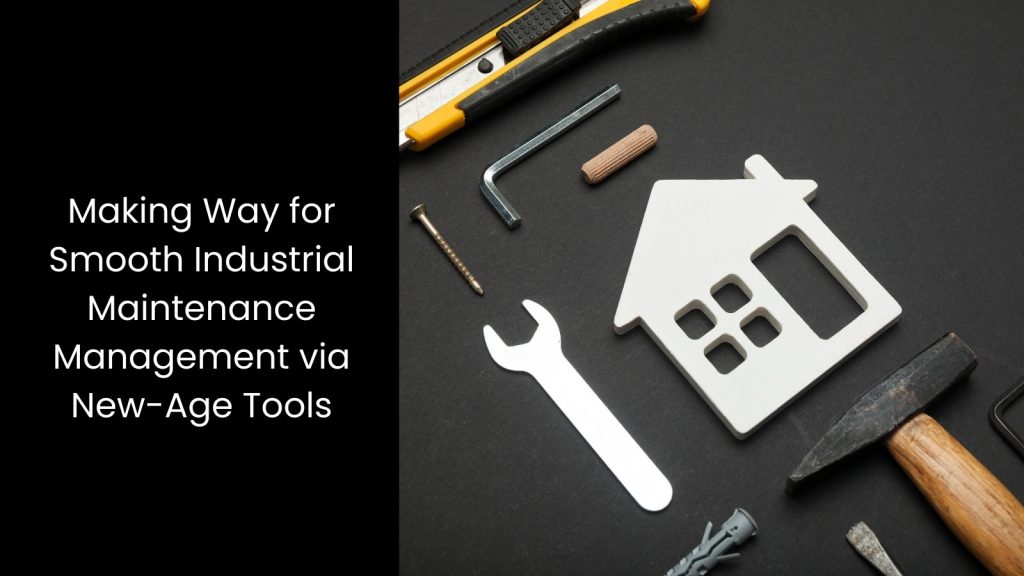
As you can see, industrial maintenance management is not about one trend or a few, but it is a fusion of top trends that bring your operational framework to the higher up. In this stage, the power of smart asset management solutions in transforming industrial maintenance management cannot be overstated. These tools drive efficiency, improve decision-making, and reduce risks. However, you need to hold hands with a reputed software partner to get the maximum benefits. With the proper movement, the future of industrial maintenance is intelligent, data-driven, and proactive.



